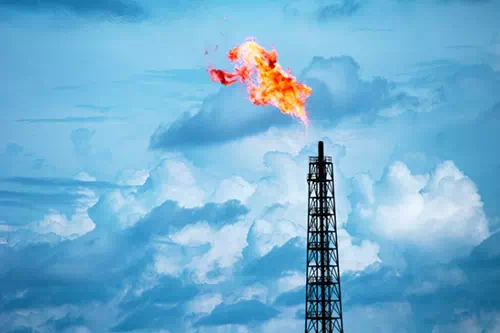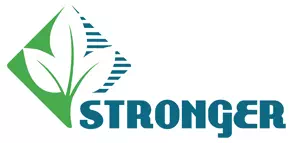

|
Emergency Planning and Community Right-to-Know Act
Overview The Emergency Planning and Community Right-to-Know Act (EPCRA) of 1986 (EPCRA) was created to help communities protect public health, safety, and the environment from chemical hazards. The Act establishes requirements for federal, state and local governments, Indian tribes, and industry regarding emergency planning and "Community Right-to-Know" reporting on hazardous and toxic chemicals. For example, EPCRA requires facilities that use or store hazardous chemicals in certain quantities on site to report those inventories to state and local emergency planning organizations. The Community Right-to-Know provisions help increase the public's knowledge and access to information on toxic chemicals at individual facilities, their uses, and releases into the environment. Government agencies and communities can use the information to improve chemical safety and protect public health and the environment. Key Provisions of the Emergency Planning and Community Right-to-Know Act Sections 301, 302 and 303. Emergency Planning Local governments are required to prepare chemical emergency response plans, and to review plans annually, at a minimum. State/tribal governments are required to oversee and coordinate local planning efforts. Facilities that maintain Extremely Hazardous Substances (EHSs) on-site in quantities greater than corresponding Threshold Planning Quantities (TPQs) must cooperate in emergency plan preparation. The extremely hazardous substances and their TPQs are listed in 40 CFR Part 355, Appendices A and B or by reviewing the Title III List of Lists. Section 304. Emergency Notification Facilities must immediately report accidental releases of extremely hazardous substances and "hazardous substances" defined under the Comprehensive Environmental, Response, Compensation, and Liability Act (CERCLA) in quantities equal to or greater than corresponding Reportable Quantities (RQs) to state and local officials. Information about accidental chemical releases must be available to the public. The RQs for extremely hazardous substances or EHSs are set forth in regulations developed under EPCRA (specifically 40 CFR Part 355, Appendices A & B. The RQs for CERCLA hazardous substances are set forth in regulations developed under CERCLA (specifically, 40 CFR 302.4). Sections 311 and 312. Community Right-to-Know Requirements Facilities manufacturing, processing, or storing hazardous chemicals defined under the Occupational Safety and Health Act and its implementing regulations must make Material Safety Data Sheets (MSDSs), or Safety Data Sheets (SDSs), describing the properties and health effects of these chemicals must be submitted to state, tribal, and local officials and local fire departments, if certain reporting thresholds are met. Facilities must also submit and inventory of these chemicals that are stored on-site at or above their reporting thresholds to state, tribal, and local officials and local fire departments, annually, by March 1. The reporting thresholds are established in the regulations at 40 CFR 370.10. Information about chemical inventories at facilities and MSDSs must be available to the public. Section 313. Toxics Release Inventory Regulated facilities must complete and submit a Toxics Release Inventory (TRI) reporting form annually for each of the more than 600 TRI-listed chemicals and chemical categories that are manufactured, processed, or otherwise used above the applicable threshold quantities. Section 322 Trade Secrets Facilities are allowed to withhold a specific chemical identity from the reports filed under Sections 303, 311, 312 and 313 of EPCRA if they submit a claim with substantiation (e.g., for a trade secret) to EPA. Summary of EPCRA Requirements The table below provides a summary of EPCRA reporting requirements. Since compliance with EPCRA is driven by determining which list your chemicals are on and determining whether thresholds are exceeded, please see the following diagram for a graphic representation of how the varying lists covered by EPCRA (and CERCLA) overlap. For a list of chemicals and associated coverage by EPCRA (and CERCLA), please visit the List of Lists.
Application of EPCRA to Natural Gas Exploration, Extraction, Production and Processing EPCRA requirements may be triggered at several points between natural gas exploration and processing. For example,
EPCRA Sections 302, 303, 304, 311, 312 Any natural gas processing facilities handling substances covered under these sections of EPCRA must provide notifications and submit reports to state and local officials and local fire departments. ((see Summary Table for outline of requirements). At its most basic level, the key to staying in compliance with various EPCRA requirements starts with knowing what chemicals and associated amounts are present at your site (i.e., an adequate chemical inventory). EPCRA Section 313 (Toxics Release Inventory) TRI reporting requirements apply to certain North American Industry Classification System (NAICS) codes. For example, within the Oil and Gas Industry Sector, TRI Reporting is required for facilities in Petroleum and Coal Products Manufacturing (NAICS 324xxx), Natural Gas Extraction (NAICS 211130, only facilities that recover sulfur from natural gas), and Petroleum Bulk Stations and Terminals (NAICS 424710). See this webpage for more information on TRI-covered industry sectors. Also note that under EPCRA, “facility” means all buildings, equipment, structures, and other stationary items which are located on a single site or on contiguous or adjacent sites and which are owned or operated by the same person (or by any person which controls, is controlled by, or under common control with, such person). Thus, a facility for TRI-reporting purposes can contain sites that are in categorized within non-covered NAICS codes if the primary NAICS code for the “facility” is TRI-covered. The Reporting Forms and Instructions guidance for TRI reporting includes a section on determining a facility’s primary NAICS code. Additionally, EPA provides TRI guidance for Petroleum Terminals and Bulk Storage Facilities. EPCRA Section 304 and CERCLA 103 Release Reporting Requirements Like any industrial operation, crude oil and natural gas exploration, production and processing operations are subject to release reporting requirements. In fact, some chemicals used in the hydraulic fracturing process (e.g., hydrochloric acid) are classified as hazardous substances under CERCLA and releases of these chemicals into the environment must be reported to very specific authorities and under short time frames. In addition to CERCLA, EPCRA Section 304 also requires reporting of releases to the environment of extremely hazardous substances. This includes releases of products used in oil and gas production that exceed reporting quantity thresholds. These chemicals may be present on site during fracturing or work‐over operations for a limited time. When a non-permitted or accidental release to the environment (e.g., air, surface water, groundwater) of any EHSs or CERCLA HSs at or above that chemical's RQ, EPCRA Section 304 require facilities to immediately notify the following:
For any releases of CERCLA hazardous substances at or above their reportable quantities, CERCLA section 103 requires facilities to notify the National Response Center (NRC). Under EPCRA section 304, a written follow-up must be submitted within 30 days of the release to the SERC and the LEPC. Specifically, notification is needed in the following cases:
With a release meeting the above criteria, facilities must provide the following basic information under EPCRA section 304:
While interpreting this exclusion as it applies to petroleum production, EPA concluded that hazardous substances normally found in refined petroleum fractions were excluded from CERCLA authority. However, EPA found that the exclusion did not include hazardous substances not normally found in petroleum fractions or that are found at levels which exceed those normally found in petroleum fractions. See EPA OGC Memorandum, "Scope of the CERCLA Petroleum Exclusion under Section 101(14) and 104(a)(2)," (July 31, 1987). Note that if there is a release of any CERCLA hazardous substances which are not covered under the petroleum exclusion, and if the RQ has been met or exceeded, then facilities must provide proper notification to the Federal, state and local authorities. |
|||||||||||||||||||||||||||||||||||||||||
Funded by EPA through a Cooperative Agreement
|
 |
||
About | Technical Topics | Federal Statutes & Regulations - US EPA | Federal Statutes & Regulations - Non-EPA | Emergency Response |
|
EPA Resources | State/Local Resources | Other Resources | Acronyms | Search | Disclaimer | Home



